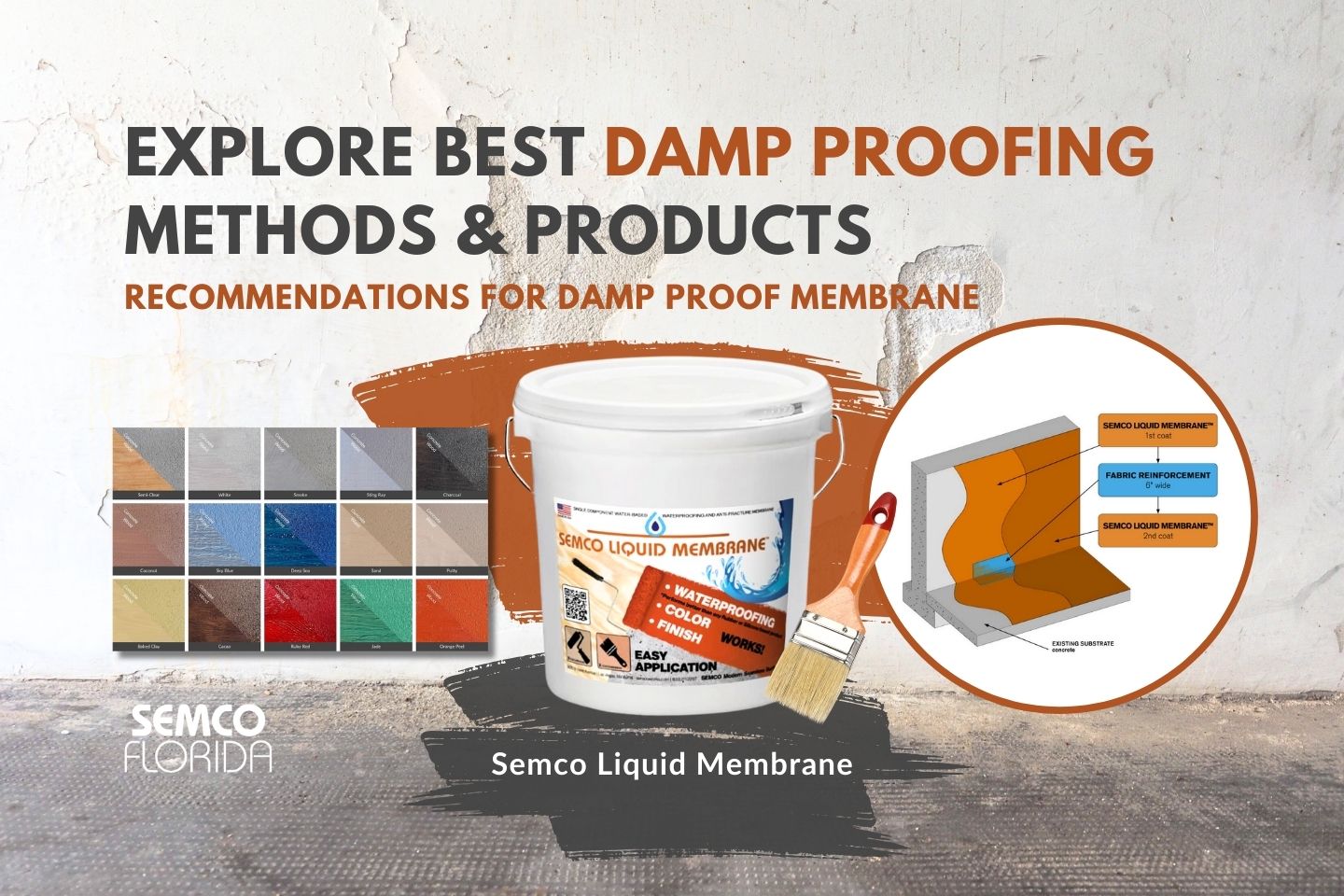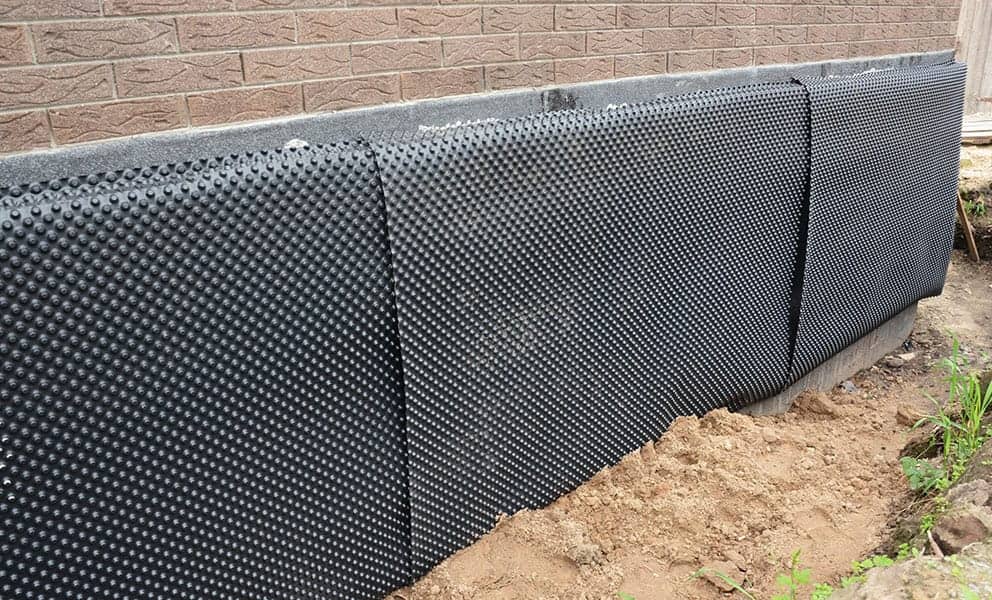Why mould removal newcastle can improve your indoor air quality
Why mould removal newcastle can improve your indoor air quality
Blog Article
Checking Out the Different Methods and Solutions for Effective Damp Proofing
Moisture in buildings poses significant difficulties to both architectural honesty and indoor air quality. Different techniques and solutions have emerged to battle this pervasive issue. From conventional damp-proof membrane layers to innovative chemical therapies, each technique offers unique advantages. Understanding these alternatives is vital for efficient moisture control. However, choosing the right service relies on certain structure conditions and needs, triggering more expedition into one of the most effective moist proofing approaches readily available.
Recognizing the Sources Of Moisture
Although wetness can occur from numerous resources, understanding these causes is important for reliable remediation. Commonly, dampness stems from three primary sources: climbing damp, permeating wet, and condensation. Climbing wet happens when groundwater takes a trip upwards with porous materials, such as block or rock, commonly due to a lack of an effective barrier (damp specialist newcastle). Passing through moist is typically triggered by exterior variables, including roof covering leaks, defective rain gutters, or damaged wall surfaces, enabling water to penetrate a residential property. Condensation, on the other hand, results from excess wetness airborne, usually worsened by inadequate air flow and temperature differences, causing water droplets developing on surfaces. Identifying these underlying problems is vital, as each type of wetness requires a tailored approach for remediation. Appropriate analysis helps in figuring out one of the most reliable solutions, eventually securing the architectural honesty of a structure and improving interior air quality
Traditional Damp-Proof Membrane Layers

Chemical Damp-Proofing Solutions
Chemical damp-proofing remedies supply an ingenious approach to stop moisture intrusion in buildings. These methods generally entail the application of liquid chemicals that permeate masonry and form an obstacle versus increasing wet. Generally made use of chemicals consist of silanes, siloxanes, and various other water-repellent representatives that react with surface area products to create a hydrophobic layer.The application process normally needs exploration holes into the wall surfaces, infusing the chemical remedy, and allowing it to treat. This method is particularly advantageous for older structures where standard damp-proof membrane layers may be impractical. In addition, chemical damp-proofing can be much less turbulent and a lot more affordable than considerable renovation projects.While efficient, these solutions depend on correct application and environmental conditions for peak efficiency. Regular upkeep and surveillance are important to ensure the long life of the damp-proofing therapy. On the whole, chemical damp-proofing represents a flexible alternative for protecting buildings versus moisture-related damage
Tooth Cavity Wall Building Methods
Cavity wall surface building and construction techniques use countless benefits, specifically in moisture control and power efficiency. By incorporating an air void in between two layers of masonry, these walls successfully mitigate water access while improving insulation. This combination not only secures frameworks from moisture yet likewise adds to reduced power consumption.
Advantages of Cavity Walls
When thinking about effective damp proofing approaches, the benefits of cavity walls attract attention prominently. Tooth cavity walls contain 2 different layers, producing an air gap that efficiently decreases wetness penetration. This design decreases the threat of wetness, as the external wall surface functions as a barrier against rain and water access. In addition, cavity wall surfaces boost thermal insulation, which adds to power performance by lowering heat loss. They also provide audio insulation, aiding to develop a quieter interior atmosphere. The air void enables for ventilation, which aids in dampness control and reduces the likelihood of mold development. These benefits not only improve the total comfort of a structure but additionally add to its durability and architectural honesty.
Moisture Control Approaches
Reliable moisture control techniques are important in cavity wall surface building to guarantee lasting protection against moisture. One primary technique includes the unification of weep holes, which facilitate water drain from the dental caries, preventing buildup. In addition, the use of breathable membrane layers can help manage wetness levels while enabling trapped vapor to run away. Correct positioning of insulation is additionally crucial, as it should not block water drainage paths. In addition, making sure that the external fallen leaves of the dental caries wall surface are built with water-resistant materials enhances general resilience. Normal upkeep checks are necessary to identify any kind of blockages or damage early, guarding the structure's stability. Inevitably, a mix of these techniques forms a robust protection versus dampness breach in tooth cavity wall surfaces.
Insulation and Energy Performance
Insulation plays an essential role in improving energy performance within cavity wall surface building. By including shielding materials, these wall surfaces produce a thermal obstacle that lessens warm loss and lowers power intake. Effective insulation not just helps preserve a stable interior temperature however also minimizes the risk of moisture, as it stops condensation within the wall surface dental caries. Different methods, such as using rigid foam boards or mineral wool, can be used to attain ideal insulation efficiency. Additionally, proper setup is crucial to ensure that gaps and gaps are lessened, which can or else compromise power performance. Ultimately, a well-insulated tooth cavity wall contributes greatly to general sustainability and lowers heating and air conditioning costs for home owners.
Exterior Damp Proofing Methods
Outside moist proofing techniques are important for shielding frameworks from dampness seepage. 2 efficient strategies include the application of water-proof membranes and the setup of French drains. These options help minimize water accumulation and protect the honesty of structures.
Waterproof Membrane Layer Application
While various techniques exist for preventing moisture access, the application of water-proof membranes stays a very effective exterior moist proofing method. These membranes are usually made from products such as polyethylene, rubber, website or changed bitumen, offering a robust obstacle against water penetration. The setup procedure includes using the membrane layer to the outside surface areas of wall surfaces or structures, guaranteeing total insurance coverage to avoid leaks. Appropriate attachment and securing at joints are vital to making the most of efficiency. Water resistant membrane layers can be used in numerous kinds, including liquid coverings and sheet membranes, enabling versatility based upon the certain demands of the framework. This technique not only secures buildings from dampness yet also boosts their durability and structural integrity.
French Drainpipe Setup
One effective technique for managing groundwater and avoiding wetness buildup around a structure's foundation is the installment of a French drain. This drain system is composed of a trench loaded with gravel and a perforated pipeline that reroutes surface water far from the foundation. Proper installment calls for cautious planning, making certain that the drainpipe slopes away from the framework to help with suitable water flow. In addition, the place of the drain is crucial; it ought to be placed in locations prone to pooling or excess dampness. Regular upkeep, including cleaning particles from the gravel and ensuring the pipeline remains unhampered, is crucial for long-lasting effectiveness. Ultimately, a well-installed French drainpipe can significantly reduce the danger of water-related issues in structures and basements.
Inside Waterproofing Techniques
Inside waterproofing strategies are crucial for protecting a structure's interior from wetness seepage and potential water damages. These approaches normally involve the application of specific products and methods developed to create a wetness barrier within the framework. One usual method is making use of waterproof finishes or sealants on walls and floorings, which stop dampness from penetrating surfaces.Additionally, setting up indoor water drainage systems, such as sump pumps, can efficiently take care of water buildup in cellars and crawl areas. One more method includes making use of vapor barriers, which are mounted to inhibit wetness activity from the ground into living spaces.Moreover, attending to any kind of cracks or voids in walls or foundations with suitable sealants guarantees an extensive protection versus water intrusion. By executing these indoor waterproofing approaches, homeowner can significantly minimize the threat of mold and mildew development, architectural damage, and other moisture-related concerns. Appropriate implementation of these techniques is crucial for lasting protection and structure integrity.
Regular Upkeep and Evaluation Practices
Regular maintenance and evaluation practices are important for guaranteeing the long-term effectiveness of damp proofing solutions in any building. Routine checks allow homeowner to recognize very early indications of wetness invasion, such as peeling off paint, mold development, and mildewy smells. These signs can signal underlying issues that call for immediate attention.Inspections ought to be conducted at the very least yearly, concentrating on prone areas like cellars, creep areas, and exterior wall surfaces. During these analyses, homeowner ought to check out sealants, water drainage systems, and ventilation to verify they operate correctly.Additionally, preserving downspouts and rain gutters is important, as clogged up systems can result in water buildup near the foundation. Applying a regular upkeep routine, in addition to timely repair services, can considerably expand the life expectancy of damp proofing actions and safeguard the architectural stability of the building. Aggressive procedures eventually add to the general health and wellness of the living setting.
Often Asked Inquiries
How Much Time Does Damp Proofing Commonly Last?
The period of wet proofing performance varies, usually lasting in between 20 to half a century. Variables such as application quality, environmental problems, and maintenance methods considerably influence the longevity of the moist proofing treatment.

Can I Damp Evidence My Home Myself?
The private considered the feasibility of do it yourself damp proofing. With appropriate research and the ideal materials, it is possible. They additionally recognized the value of professional support to ensure lasting effectiveness and stop future problems.
What Are the Indicators of Inefficient Damp Proofing?
Signs of inadequate moist proofing consist of persistent mildewy smells, visible mold development, peeling paint, moist spots on walls, and wood degeneration - mould treatment newcastle. House owners must address these problems immediately to avoid additional damages and health worries
Does Damp Proofing Affect Indoor Air Quality?

Exactly How Much Does Expert Damp Proofing Cost?
Expert damp proofing prices vary significantly, normally ranging from $1,000 to $5,000 depending upon the property's dimension, the degree of the moist concern, and picked methods. Each scenario calls for a customized assessment for accurate rates. Commonly, wetness originates from three key resources: climbing damp, penetrating moist, and condensation. When taking into consideration effective moist proofing techniques, the benefits of dental caries wall surfaces stand out plainly. Exterior wet proofing approaches are important for safeguarding structures from wetness seepage. While various techniques exist for preventing dampness ingress, the application of water resistant membrane layers stays a very effective exterior moist proofing method. Indications of inefficient damp proofing include persistent musty odors, noticeable mold and mildew development, peeling off paint, wet patches on wall surfaces, and timber degeneration.
Report this page